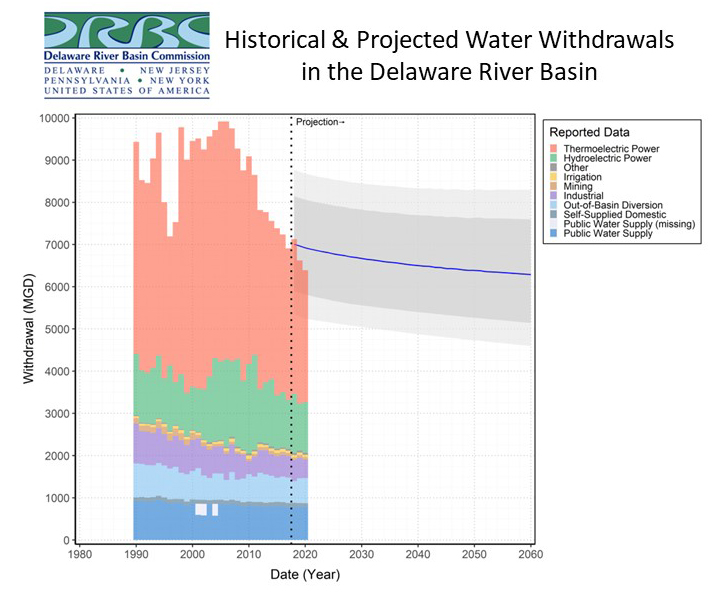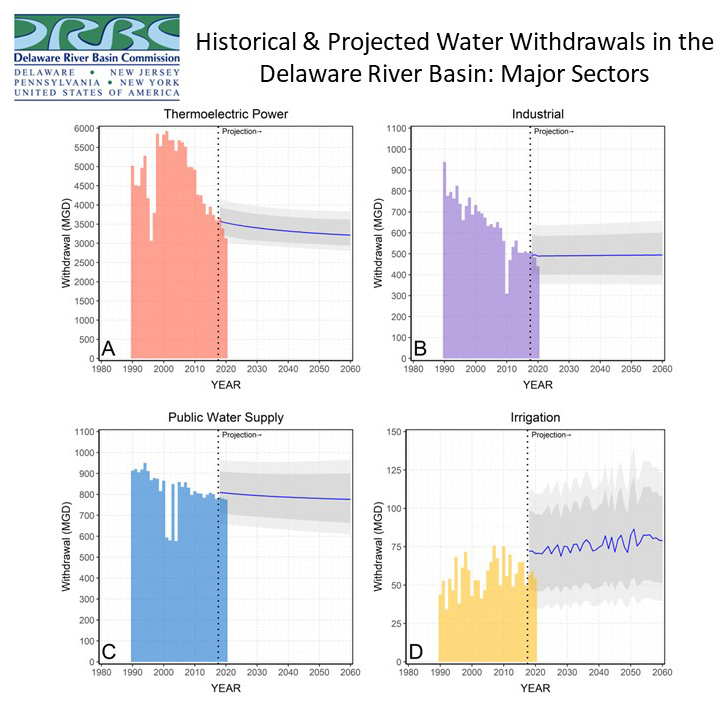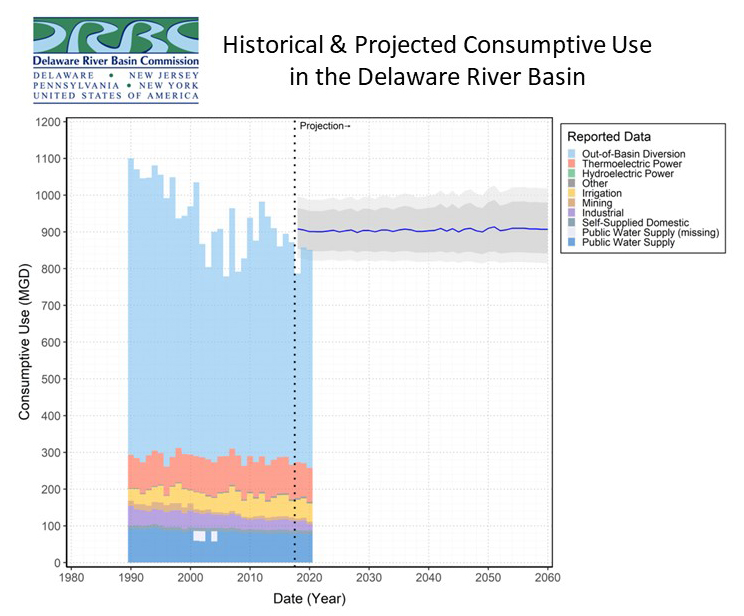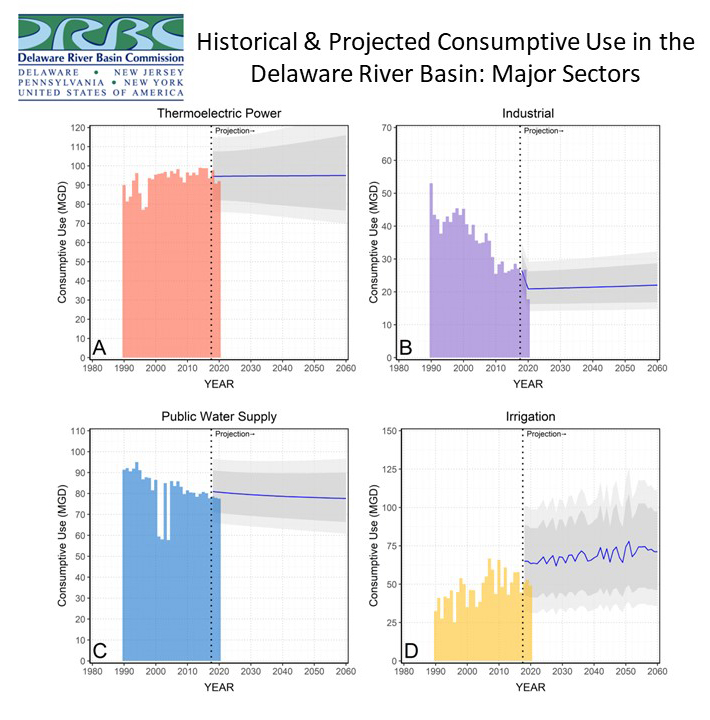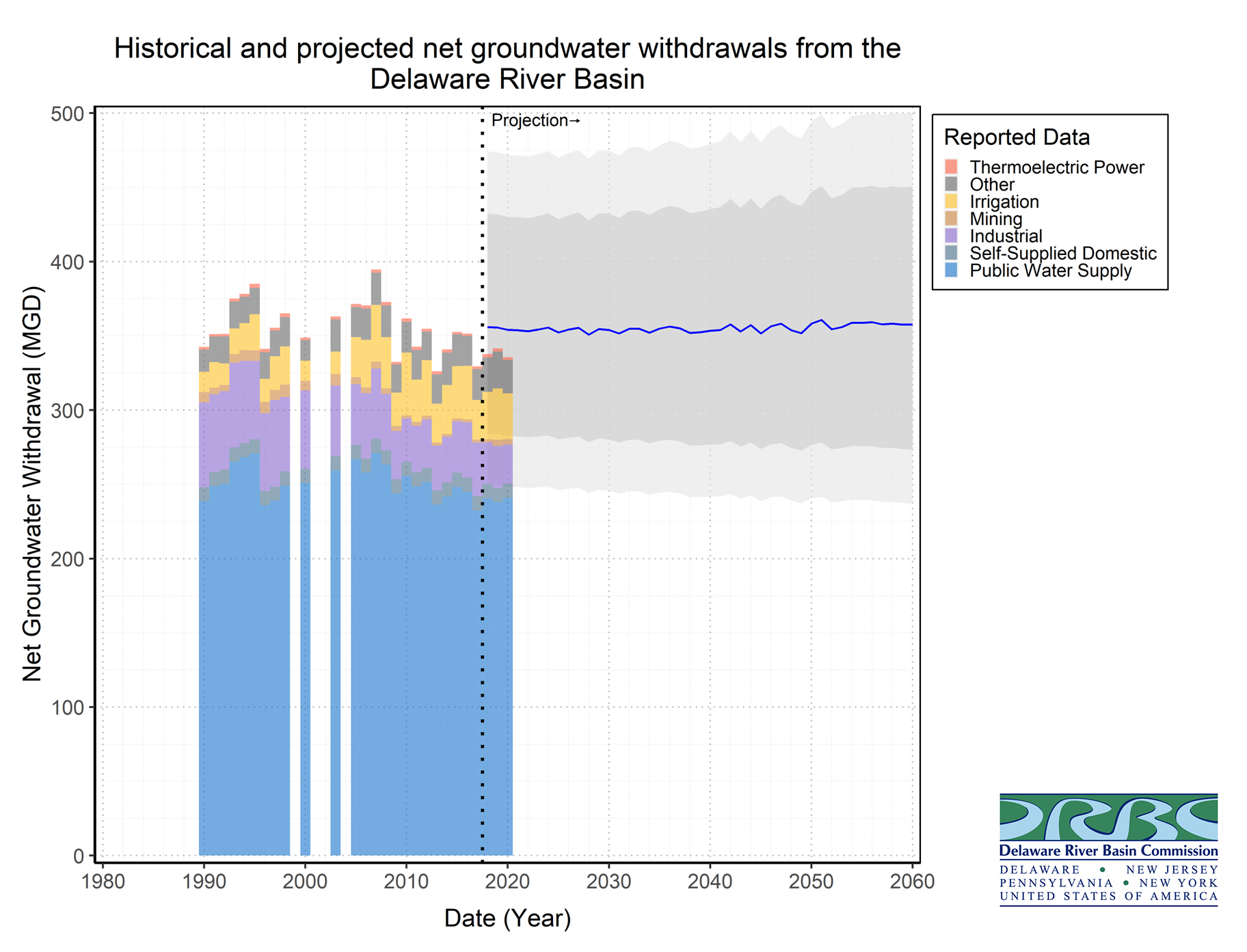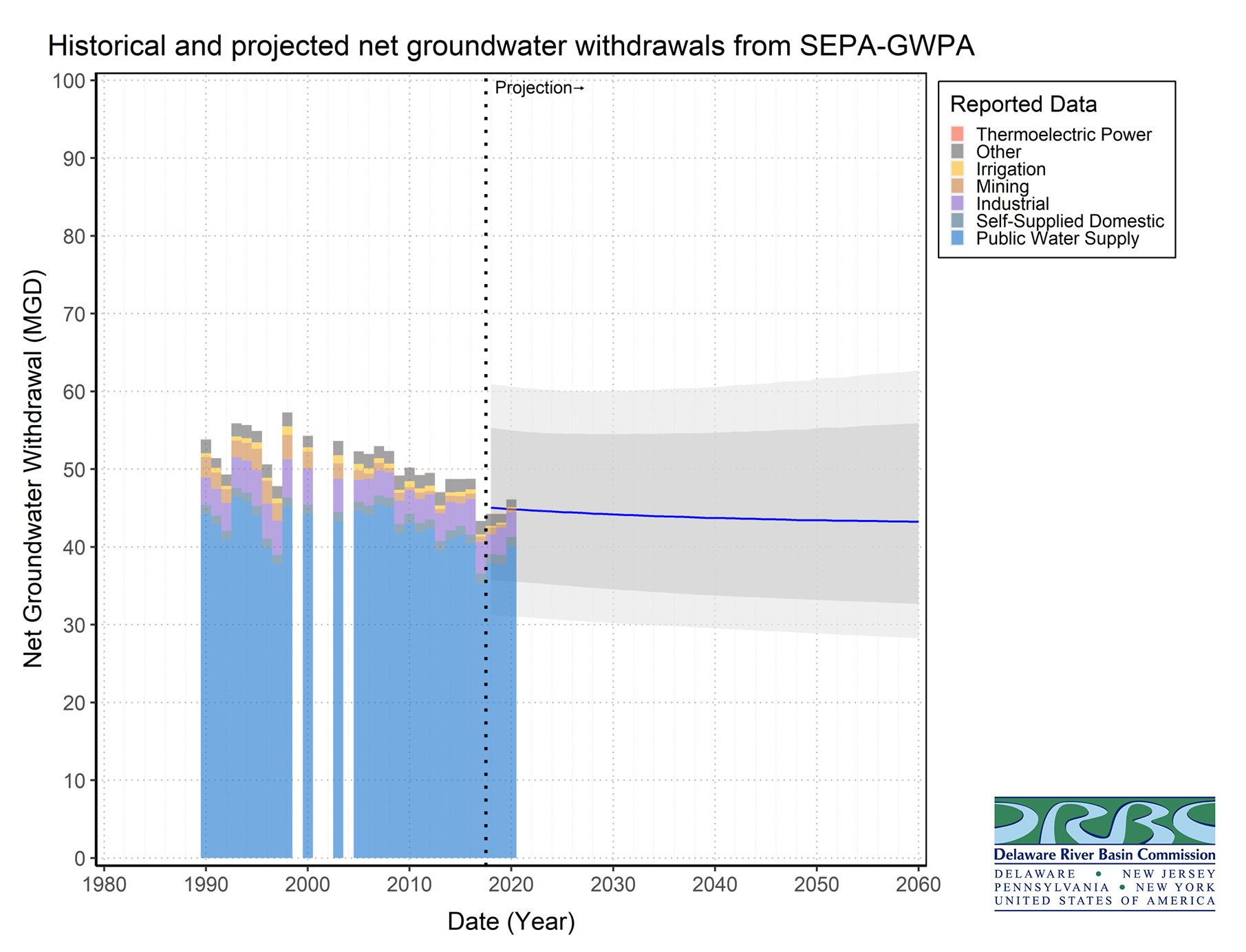Delaware • New Jersey • Pennsylvania
New York • United States of America
- Basin Water Use
- Groundwater
- Water Conservation Program
- Water Audit Program
- Data Centers
- Water Withdrawal & Consumptive Use: Estimates & Projections (2021 Report)
- Evaluation of Additional Storage in the Delaware River Basin (2023 Report)
- Water Management Advisory Committee
- Water Resource Data Sets
- Water Charging Program
- DRB Water Use Fast Facts
- Water Withdrawal & Consumptive Use: Estimates & Projections
- Historical & Projected Water Withdrawals in the DRB
- Historical & Projected Consumptive Use in the DRB
- Historical & Projected Groundwater Withdrawals in the DRB
- DRBC Resources
- Basin State Resources
Population Served by DRB Water
- An estimated 14.2 million people rely on water from the Delaware River Basin (DRB) for their daily water needs (2020 data).
- Approximately 8.6 million people live in the Basin.
- Approximately 85% of the Basin population resides within public water supply service areas.
- The volume of exports to New York City and northeastern New Jersey is sufficient to supply water to an additional 5.5 million people.
- Approximately 8.6 million people live in the Basin.
DRB Water Withdrawals: 2022 Data
- Total ground and surface water withdrawals from the Basin: 6,096 mgd (~6.1 billion gallons per day)
- On average, approximately 92% of all water used in the Basin is obtained from surface waters. The remaining 8% is from groundwater.
- Learn more about groundwater
- On average, approximately 92% of all water used in the Basin is obtained from surface waters. The remaining 8% is from groundwater.
- Total Consumptive Use: 848 mgd
- Consumptive use is the portion of water withdrawn from a watershed that is not immediately returned.
- Major Exports from the Basin: 578 mgd (out-of-basin water diversions)
- Consumptive Use in the Basin: 270 mgd (e.g., from public water supply, thermoelectric and irrigation)
- Consumptive use is the portion of water withdrawn from a watershed that is not immediately returned.
[mgd = millions gallons per day]
Major Water Use Sectors
At a high level, four dominant use sectors account for over 95% of total water withdrawals:
- Thermoelectric power generation (57%)
- Public Water Supply, including major exports and self-supplied domestic withdrawals (24%)
- Hydroelectric Power Generation (9%)
- Industrial use (6%)
In order for DRBC to perform long-term water supply planning, we need to have an understanding of how water is currently being used in the Basin, as well as explore historical data.
2021 Report
In 2021, the DRBC published a report assessing 30 years of water withdrawals and consumptive use in the Delaware River Basin, with projections through the year 2060.
- Water Withdrawal and Consumptive Use Estimates for the Delaware River Basin (1990-2017) With Projections Through 2060 (October 2021)
Key Takeaways
- Peak water withdrawal from the Delaware River Basin has likely already occurred (in 2005 and 2006 it was estimated to be approximately 9.917 billion gallons per day).
- In addition to the three major water use sectors (power, public water supply and industry) tracked by the DRBC, irrigation is also a key sector that is strongly correlated with seasonal variables.
- Power (Thermoelectric): Water withdrawals have decreased and are projected to continue to decrease. However, consumptive use is expected to remain constant.
- Public Water Supply: Water withdrawals have decreased and are projected to continue to decrease despite an increasing population.
- Industry: Water withdrawals and consumptive use have decreased and are expected to remain constant.
- Irrigation: Comprised of multiple uses; the primary is agricultural irrigation. Withdrawals and consumptive use are projected to increase in the future.
- Power (Thermoelectric): Water withdrawals have decreased and are projected to continue to decrease. However, consumptive use is expected to remain constant.
Check out the below graphics showing historical and projected water withdrawals and consumptive use in the DRB.
Water Use/Withdrawal Info
- Data Centers in the DRB (pdf; given at October 2025 WMAC meeting)
- Managing Our Shared Water Resources (pdf; given at Oct. 2025 WRADRB Technical Conference; includes section on Basin water use)
- Delaware River Basin Overview: Agricultural Water Demand and Water Quality (pdf; given at April 2025 Pennsylvania Society for Promoting Agriculture meeting)
- 2023 Technical Report for the Delaware Estuary and Basin: DRBC-Authored Chapter 3 - Water Quantity (pdf)
- CY2020 Water Use Updates (pdf; presentation given at the June 2022 WMAC Meeting)
- Water Withdrawal and Consumptive Use Estimates for the Delaware River Basin (1990-2017) With Projections Through 2060 (2021)
- State of the Delaware River Basin 2019
- Watersheds and Water Use (pdf; presentation given at the 2019 Water Resources Association of the Delaware River Basin Fall Technical Symposium)
- DRBC Water Demand Management: Benefits of Promoting Best Practices (pdf; presentation given at the 2018 AWRA National Conference)
- Consumptive Use Replacement Program for Power Facilities in the Delaware River Basin (pdf; presentation given at the 2018 AWRA National Conference)
- Map of Surface Water Withdrawals in the Delaware River Basin (pdf)
- U.S. Geological Survey (USGS) Water Budgets for Selected Watersheds in the Delaware River Basin, Eastern Pennsylvania and Western New Jersey (2005; written in cooperation with the DRBC)
Groundwater Info
- Groundwater Use in the DRB
- DRBC Groundwater Management (pdf; presented at 2024 WeConserve PA Conference)
- Estimated Groundwater Availability in the Delaware River Basin 2020 - 2060 (pdf; 2022)
- Southeastern Pennsylvania Groundwater Protected Area
Delaware
New Jersey
- New Jersey Dept. of Environmental Protection - Division of Water Supply and Geoscience
- New Jersey Water Supply Plan
New York
Pennsylvania
Copyright © Delaware River Basin Commission,
P.O. Box 7360, West Trenton, NJ 08628-0360
Phone (609)883-9500; Fax (609)883-9522
Thanks to NJ for hosting the DRBC website

